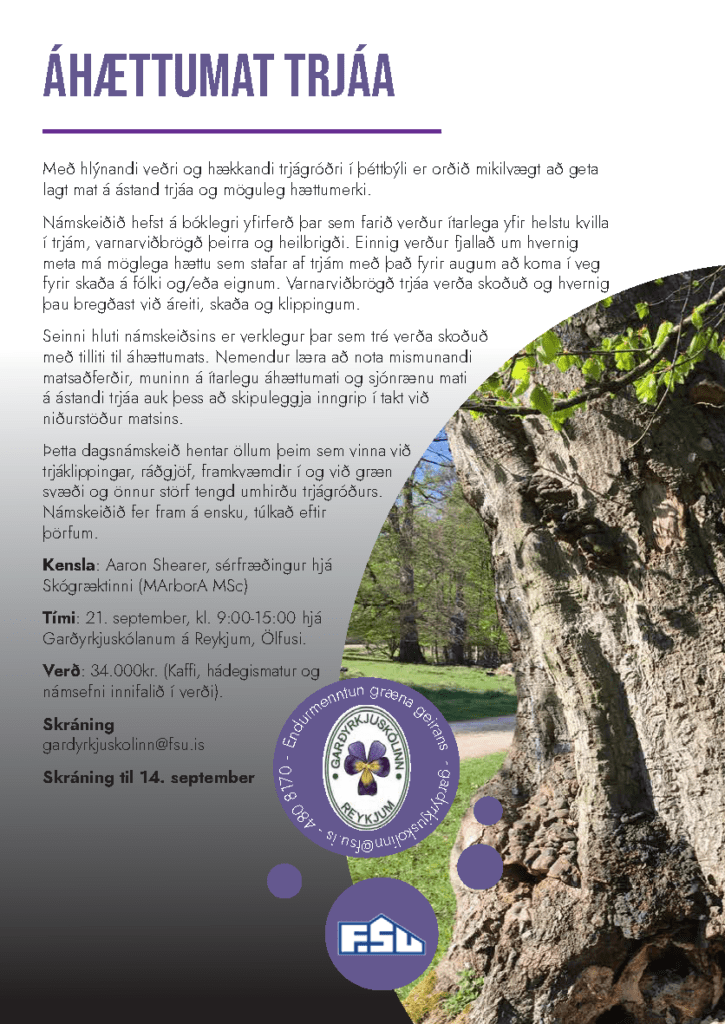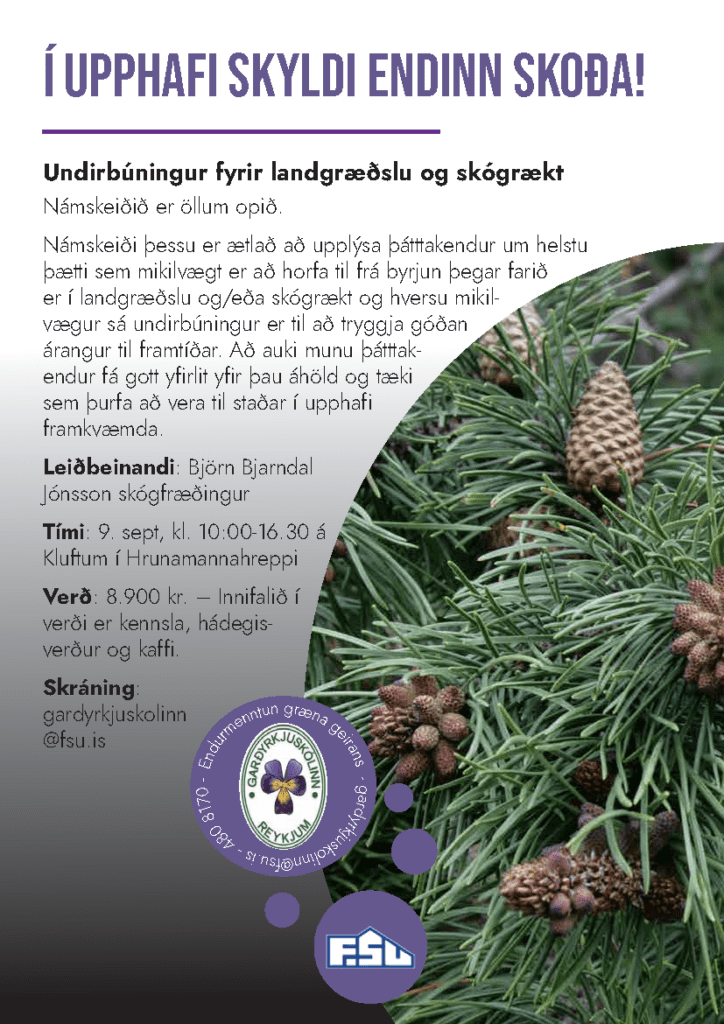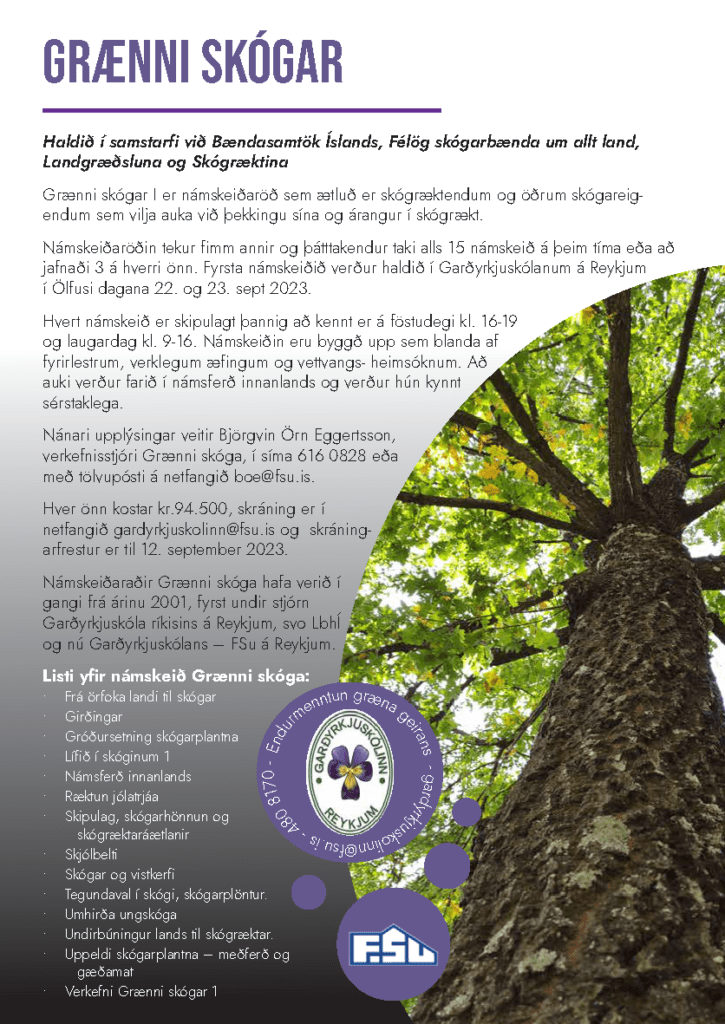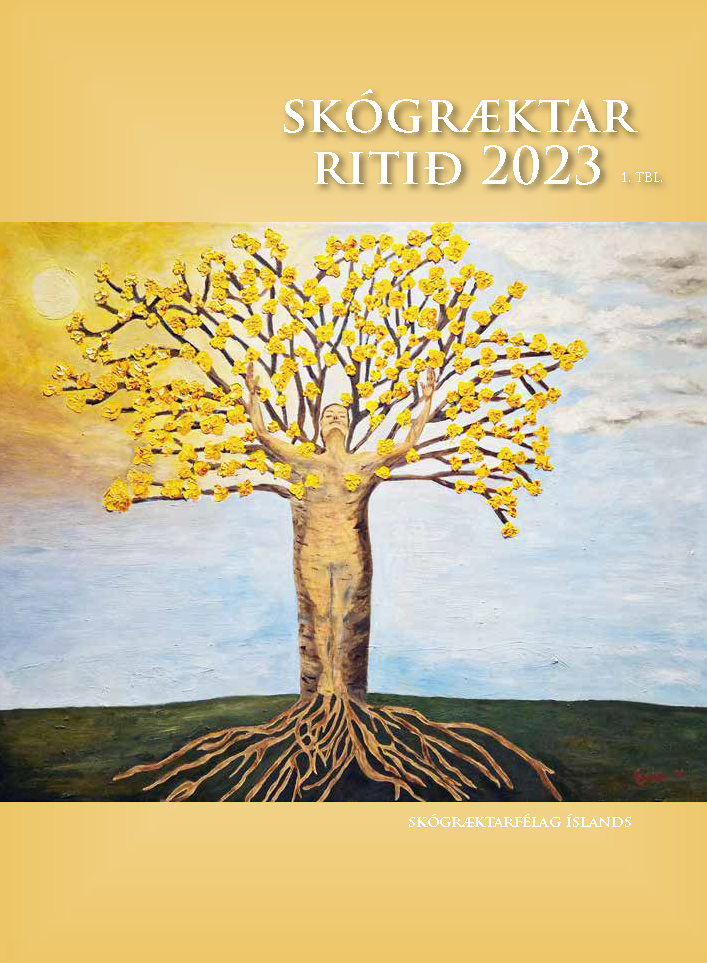Aðalfundur Skógræktarfélags Íslands 2023 var haldinn á Patreksfirði dagana 1.-3. september 2023 og voru Skógræktarfélög Patreksfjarðar, Bíldudals og Tálknafjarðar gestgjafar fundarins. Var þetta 88. aðalfundur félagsins.
Góð mæting var á fundinn, en um 150 þátttakendur víðs vegar af landinu mættu til fundar. Fundurinn hófst eins og venja er á föstudagsmorgni með ávörpum. Jónatan Garðarsson, formaður Skógræktarfélags Íslands, setti fundinn. Því næst tók til máls Guðni Th. Jóhannesson, forseti Íslands. Að ávarpi hans lokinu færði Jónatan honum og Tønnes Svanes, sendifulltrúa Norska sendiráðsins á Íslandi fyrstu eintök af nýútkominni bók, gefinni út af Skógræktarfélagi Íslands og Norska skógræktarfélaginu. Jónatan hélt að því loknu ávarp. Næst upp í pontu var Nanna Sjöfn Pétursdóttir, formaður Skógræktarfélags Bíldudals og bauð hún fundargesti velkomna. Tønnes Svanes var næstur á mælendaskrá og eftir honum hélt ávarp Þórdís Sif Sigurðardóttir, bæjarstjóri Vesturbyggðar. Síðastur á mælendaskrá var Þröstur Eysteinsson skógræktarstjóri.
Að ávörpum loknum tóku við hefðbundin aðalfundarstörf – kynning á starfsskýrslu Skógræktarfélags Íslands, skýrslu Landgræðslusjóðs, tillagna að ályktunum og skipan í nefndir. Að hádegisverðu loknum var komið að kynningu á gestgjöfunum. Úlfar Thoroddsen kynnti starf Skógræktarfélags Patreksfjarðar, Brynjólfur Gíslason kynnti til leiks skógræktarfélag Tálknafjarðar og Nanna Sjöfn Pétursdóttir Skógræktarfélag Bíldudals. Brynjólfur Jónsson og Óskar Guðmundsson kynntu svo bókina sem forsetanum hafði verið færð.
Að kynningum loknum var komið að vettvangsferð, sem var um skóglendi Tálknafjarðar. Byrjað var á göngu eftir Brynjólfsstíg í skógin ofan þorpsins og því næst haldið til Kvígindisfells, þar sem Lilja Magnúsdóttir leiddi gönguferð um skóginn og var endað á hressingu í útihúsunum á Kvígindisfelli.
Dagskrá laugardags hófst á nefndastörfum, en að þeim var komið að fræðsluerindum. Lovísa Ásbjörnsdóttir flutti erindi um plöntusteingervinga í Surtarbrandsgili, Björn Traustason fór því næst yfir framgang birkis á Vestfjörðum, Hreinn Óskarsson sagði frá skógræktarreit í Vestur-Botni og Lilja Magnúsdóttir sagði frá merkistrjám í Barðastrandarsýslu. Að lokum kynnti svo Eiður B. Thoroddsen vettvangsferð dagsins.Voru þrír staðir heimsóttir í henni – skógarreitur í Skápadal, Sauðlauksdalur og safnið á Hnjóti. Dagskrá laugardagsins lauk svo með hátíðarkvöldverði og dagskrá í boði gestgjafanna. Voru fimm félagar heiðraðir fyrir störf sín í þágu skógræktar, þau. Eiður B. Thoroddsen, Helga Gísladóttir, Brynjólfur Gíslason, Nannar Sjöfn Pétursdóttir og Finnbjörn Bjarnason. Einnig var Magnús Gunnarsson gerður að heiðursfélaga Skógræktarfélags Íslands. Auk þess var þeim félögum sem áttu tugaafmæli á árinu og voru á staðnu, færðar árnaðaróski.
Á sunnudeginum tóku svo við hefðbundin aðalfundarstörf – afgreiðsla reikninga, ályktana og kosning stjórnar. Engar breytingar urðu á stjórn. Í varastjórn voru kosin Kristinn H. Þorsteinsson, Valgerður Auðunsdóttir og Björn Traustason.
Fundargögn:
Dagskrá (pdf)
Starfsskýrsla Skógræktarfélags Íslands 2022-2023 (pdf)
Skýrsla Landgræðslusjóðs (pdf)
Söngbók (pdf)
Reikningar:
Skógræktarfélag Íslands ((pdf)
Kolviður (pdf)
Landgræðslusjóður (pdf)
Skógræktarsjóður Húnavatnssýslu (pdf)
Úlfljótsvatns sf. (pdf)
Yrkja (pdf)






Nýlegar athugasemdir